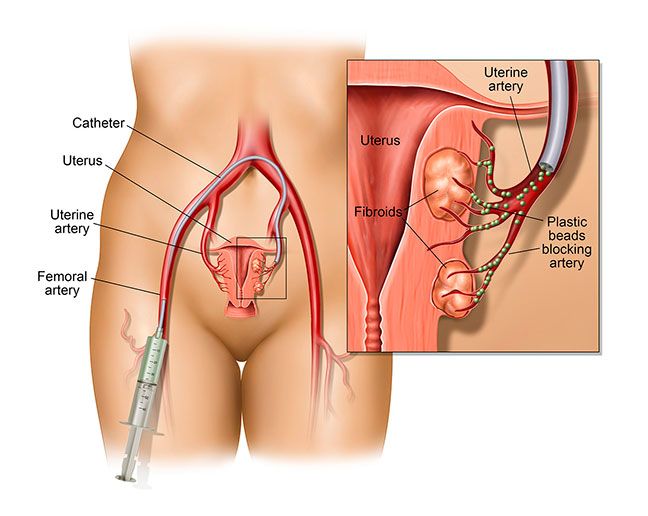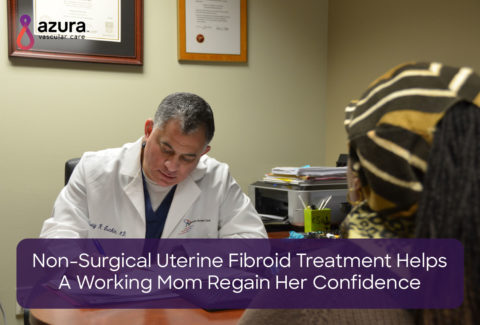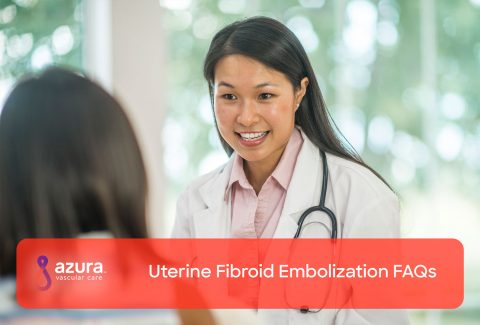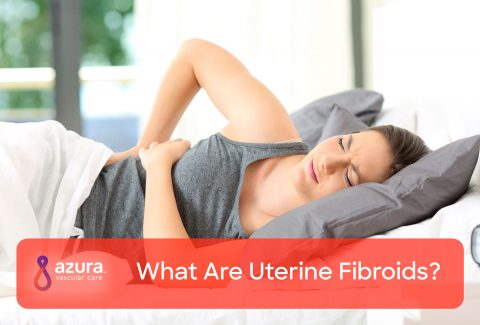
Are you tired of living with painful symptoms caused by uterine fibroids? It might be time to decide on a treatment option.
If you have been diagnosed with uterine fibroids and are ready to discuss with your doctor about how to get symptom relief, you may want to arm yourself with all the knowledge you can, so you can ask questions and then make an informed decision. Knowing what to ask your doctor about the available fibroid treatment options can help you feel confident that you’re going to make the decision best for you.
To get you started, we’ve created this list of 10 questions t as a guide when discussing uterine fibroid treatment with your doctor. While this list is not all inclusive, and you are likely to have more questions, it gives you a good place to start.
10 Questions to Ask Your Doctor About Your Fibroid Treatment Options
1. What will happen if I don’t have treatment?
Often, symptoms of fibroids will persist until you reach menopause. The answer will vary for every woman, but the question is still worth exploring with your doctor.
2. Do I absolutely need treatment?
Symptoms of uterine fibroids can be painful and effect quality of life. While some women don’t need treatment, they do seek symptomatic relief. Determining from your doctor whether you actually need treatment is the first step toward finding the best option.
3. What is a hysterectomy? Is a hysterectomy my only option?
A hysterectomy is surgery to remove a woman’s uterus. Some women actually need to have a partial or full hysterectomy. This treatment option is typically reserved for post-menopausal women and/or for women who have very large fibroids. Ruling out a hysterectomy allows you and your doctor the opportunity to discuss alternative treatments that are less invasive.
4. What is a myomectomy? Am I a candidate for a myomectomy?
Like a hysterectomy, a myomectomy is also a surgical procedure. During a myomectomy, your fibroids will be removed and, if necessary, your uterine wall will be rebuilt. The difference between a hysterectomy and a myomectomy is that with a myomectomy, your uterus is left intact, meaning pregnancy in the future may be a possibility. i
5. Am I a candidate for endometrial ablation? And if so, what are the risks?
If you have moderate to severe symptoms and your fibroids are located entirely inside your uterus, endometrial ablation may be an option. However, because this procedure destroys the lining of your uterus, if you hope to have children in the future, you want to talk to your doctor about the risks of this procedure. ii
6. Is there a non-surgical fibroid treatment option? Am I a candidate for uterine fibroid embolization (UFE)?
For women with mild to severe symptoms, Uterine fibroid embolization (UFE) is a possible option in place of surgery for the treatment of fibroids. UFE is a minimally invasive procedure that safely and effectively shrinks fibroids, causing them to die. Performed by an interventional radiologist, this outpatient procedure uses an imaging (x-ray) procedure that helps locate the blood supply that’s feeding your fibroid(s). iii The UFE procedure kills fibroids by cutting off their blood supply, essentially starving them. UFE does not require general anesthesia and can usually be performed on most fibroids, except for very large ones.

7. If I choose to have UFE or another procedure, where will it be performed?
Whether your procedure is performed in an outpatient facility or in a hospital will determine things like whether you’ll need transportation to and from the facility, and if you’ll need help at home. If you’re sent home soon after your procedure, you’ll likely need someone to drive you home, and you might need someone to stay with you for the first day or two. Your doctor will review with you what to expect and let you know if the procedure should be performed on an outpatient basis or in a hospital.
8. What type of anesthesia will I receive with the different procedures and what are the risks?
It’s very important to understand what type of anesthesia you’ll be given and what the risks are for each type of anesthesia. With general anesthesia, for example, you’re completely unconscious during the procedure. iv It’s also important to discuss your current medical conditions, allergies and medications with your doctor before undergoing any type of anesthesia. Your doctor will review all of this with you.
9. How long will it take me to recover from the different procedures, and what type of symptoms can I expect to have while I recover?
Every procedure has a different recovery period. Knowing in advance how long your recovery is expected to take will help you prepare. For instance, you might need extra help with childcare and household duties, and you might need to make arrangements at work while you’re at home recuperating. Also, be sure to understand what recovery symptoms are typically normal, such as fever, nausea and intermittent cramping. You’ll be given detailed instructions specific to your procedure in advance so you know what to expect.
10. What treatment do you recommend?
Once you and your doctor have had a chance to explore your case, the various treatment options and your goals for the future, you’ll of course want to ask him or her what option or treatment he or she recommends.
Having an informed discussion about your fibroid treatment options will give your doctor an opportunity to understand your needs, desires and fears. This will help to reach an optimal decision about which option is truly the best one for you.
Sources:
i Mayo Clinic. http://www.mayoclinic.org/tests-procedures/myomectomy/home/ovc-20205346
ii National Institutes of Health, https://www.nichd.nih.gov/health/topics/uterine/conditioninfo/treatments/Pages/surgical-treatments.aspx
iii Siskin, G. P., Englander, M., Stainken, B. F., Ahn, J., Dowling, K., and Dolen, E. G. (2000) Embolic Agents Used for Uterine Fibroid Embolization. American Journal of Toentgenology, 175 (3): 767–773. Retrieved from: http://www.ajronline.org/doi/full/10.2214/ajr.175.3.1750767
iv Mayo Clinic. http://www.mayoclinic.org/tests-procedures/anesthesia/home/ovc-20163578


